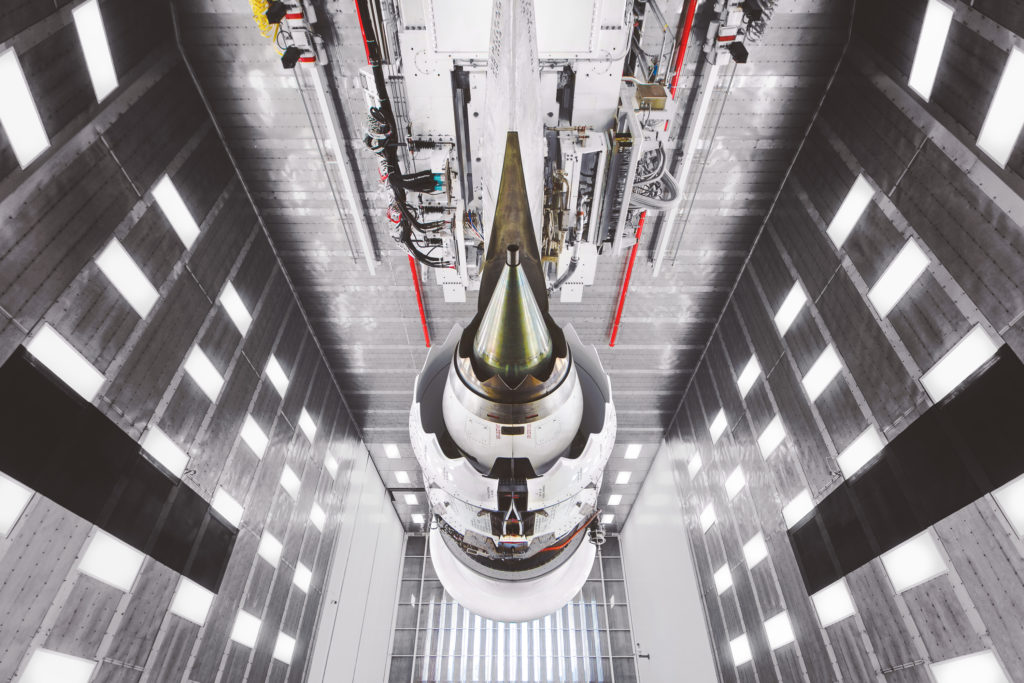Sunday saw the maiden flight of the Boeing 777X, marking an important date in the history of 3D printing for the twin GE9X engines driving the aircraft. Each GE9X features roughly 300 3D-printed parts made by GE Additive’s Technology Center in Ohio and the team at Avio Aero in Italy. The event was so momentous that Boeing tracked the flight live that day.
An upgrade to the Boeing 777, launched in 1994, the 777X is instantly recognizable for its carbon fiber, folding wing tips, which allow the craft to park in the same bays as other planes. The 777X is being billed as the largest and most fuel-efficient twin-engine jet on the planet, due to a 10 percent decrease in fuel use and emissions. One might wonder the worth of celebrating the flight of a new aircraft, given the massive carbon footprint of the aerospace industry, but, unless flying becomes more heavily regulated, any improvement in emissions is worth noting.
This reduction in emissions was achieved in part by a new aerodynamic design and the GE9X engines. As wide as the body of a Boeing 737, the GE9X is the world’s largest engine on any commercial plane. This size was achieved through the use of advanced fiber composites that made it possible to drop the number of blades in the system from 22, as seen in the GE90, to just 16. In addition, the GE9X features the now famous 3D-printed fuel nozzle, which reduced part count from 20 to just one.
Other features, such as the use of light and heat-resistant ceramic composites for the engine shroud, not only result in increased weight and fuel savings, but also render the GE9X the most powerful engine on any commercial aircraft. It delivers up to 100,000 pounds of thrust.
After the GE9X underwent a test flight in March 2018, they have been outfitted onto a 777x, which was scheduled for its first take-off on Saturday, January 25, but delayed due to weather. The following day, the aircraft took off from and landed at Boeing Field outside of Seattle.
The Boeing 777X is competing with the Airbus A350 XWB, in terms of size, performance and number of 3D-printed parts. The A350 already features over 1,000 3D-printed parts, including cabin parts made using Stratasys technology, titanium pylon brackets, and a cabin spacer 3D printed by Materialise. What it doesn’t have is a recent history of catastrophic flight control flaws associated with the 737 MAX aircraft.
This latest PR event may help some tech enthusiasts forget the recent tragedies associated with the 737 MAX, but the company will have to do more to gain the reassurance of the FAA, its customers and the public. Naturally, the FAA has said that it will ensure a rigorous review of the aircraft, after its neglect over the 737 Max, and Boeing has said that it will also perform thorough testing to achieve FAA certification. Emirates, the aircraft’s launch customer, has said that it wants the plane to be put through “hell on Earth” during testing.
The 777X is expected to enter service in 2021, which is a year later than originally scheduled. The A350, on the other hand, has already begun flying.
Correction January 28, 2020: A previous version of this article inaccurately stated that the 737 MAX suffered from “engine failures”. The 737 MAX did not suffer from an issues associated with its engines, but from design flaws within the aircraft’s flight control system, specifically the Maneuvering Characteristics Augmentation System.
Join the discussion of this and other 3D printing topics at 3DPrintBoard.com.
Subscribe to Our Email Newsletter
Stay up-to-date on all the latest news from the 3D printing industry and receive information and offers from third party vendors.
Print Services
Upload your 3D Models and get them printed quickly and efficiently.
You May Also Like
3D Printing News Briefs, July 2, 2025: Copper Alloys, Defense Manufacturing, & More
We’re starting off with metals in today’s 3D Printing News Briefs, as Farsoon has unveiled a large-scale AM solution for copper alloys, and Meltio used its wire-laser metal solution to...
3DPOD 260: John Hart on VulcanForms, MIT, Desktop Metal and More
John Hart is a Professor at MIT; he´s also the director of the Laboratory for Manufacturing and Productivity as well as the director of the Center for Advanced Production Technologies....
3D Printing News Briefs, June 28, 2025: Defense Accelerator, Surgical Models, & More
In this weekend’s 3D Printing News Briefs, 3YOURMIND was selected to join an EU Defense Accelerator, and PTC has announced model-based definition (MBD) capabilities within Onshape. Finally, a study out...
EOS in India: AM’s Rising Star
EOS is doubling down on India. With a growing base of aerospace startups, new government policies, and a massive engineering workforce, India is quickly becoming one of the most important...


































